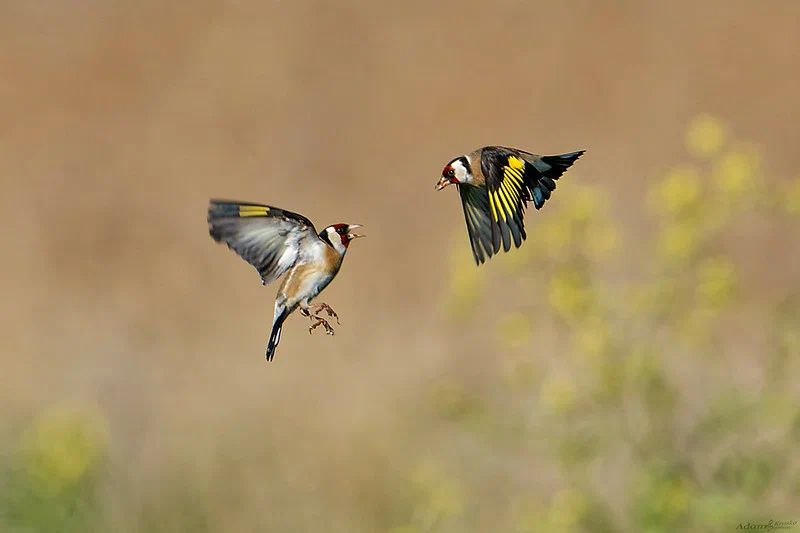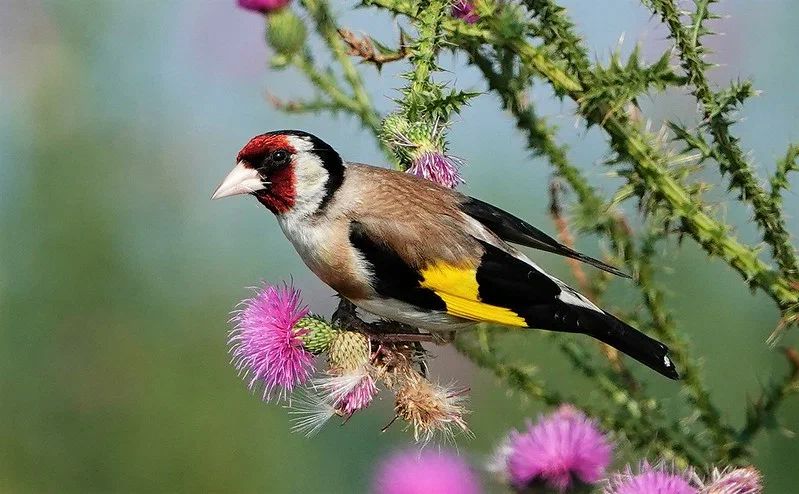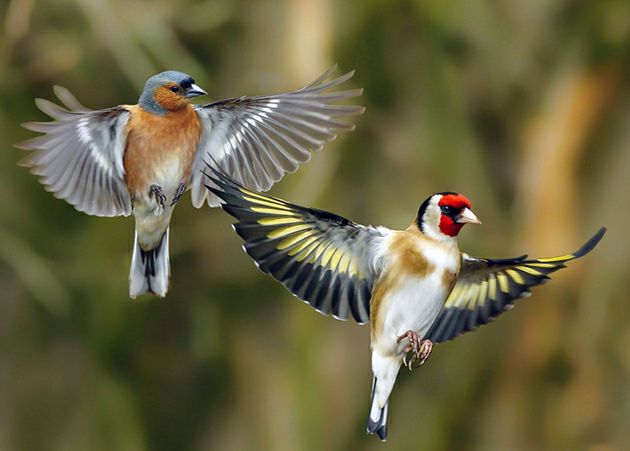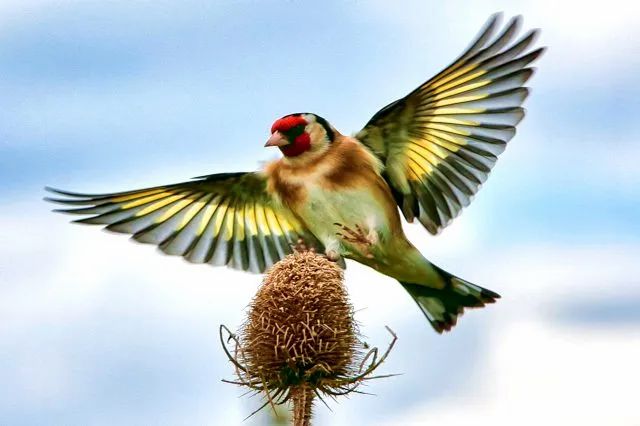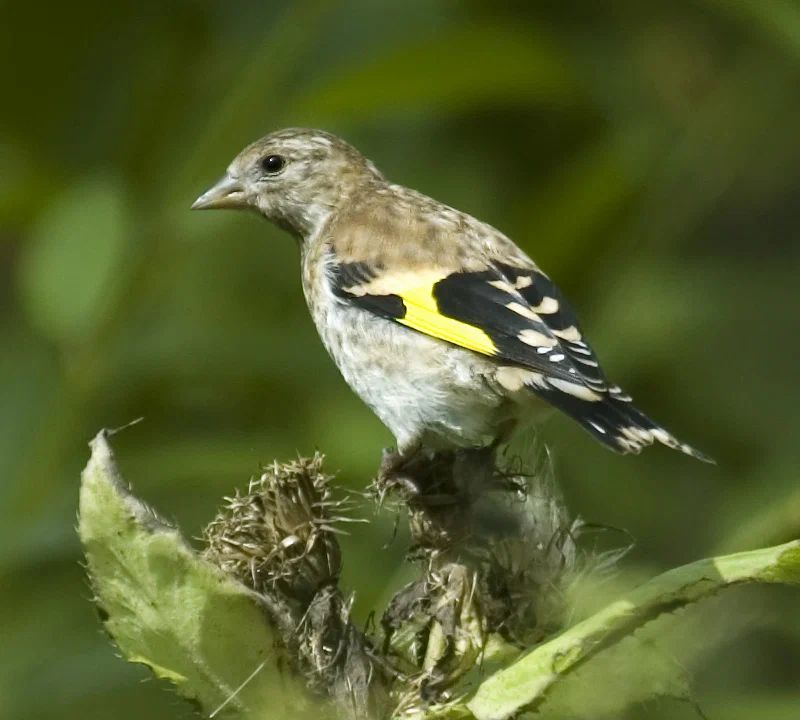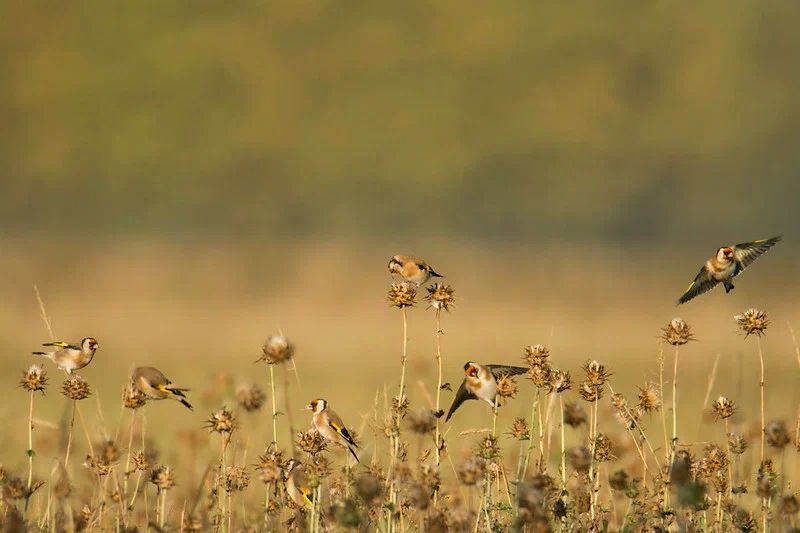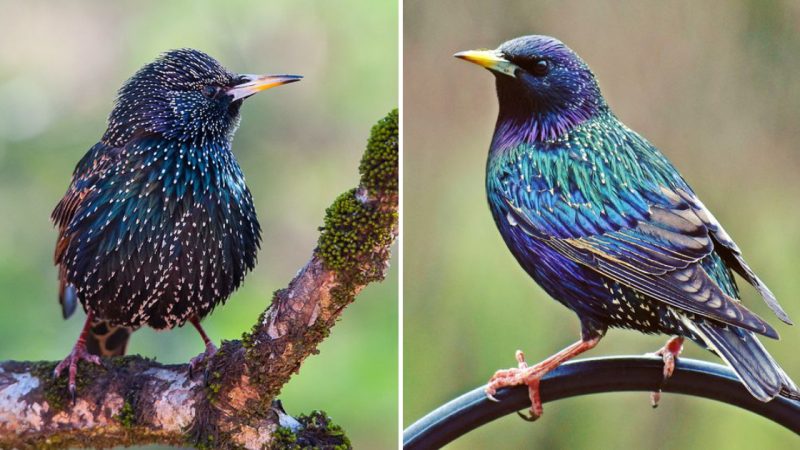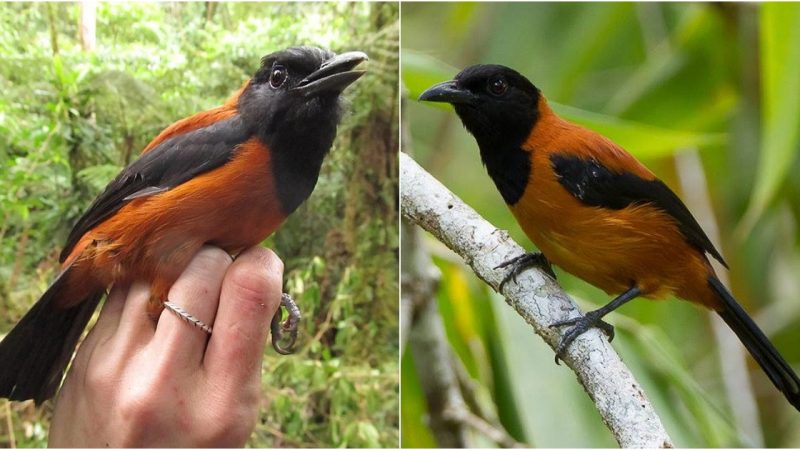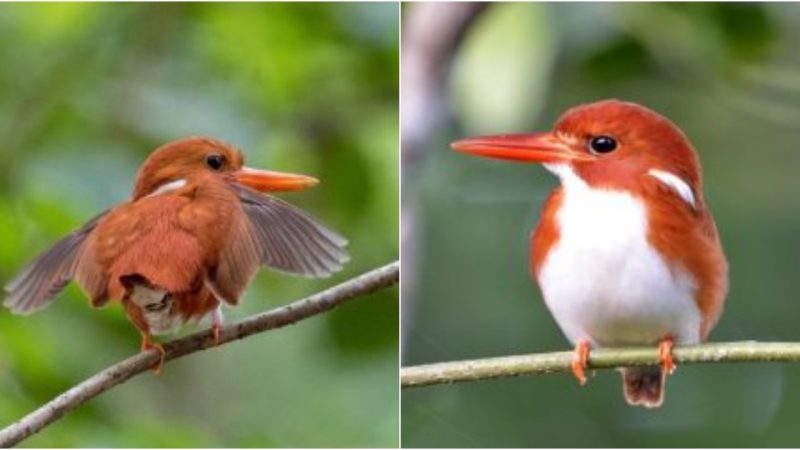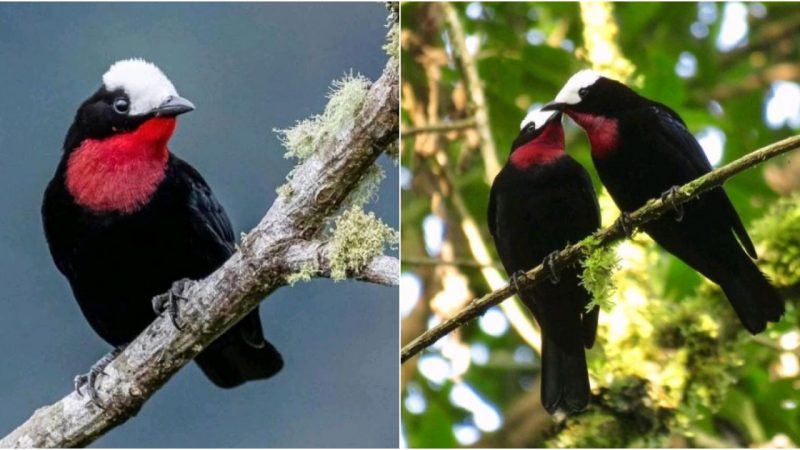The Common Goldfinch – a Bright Lover of Thistles
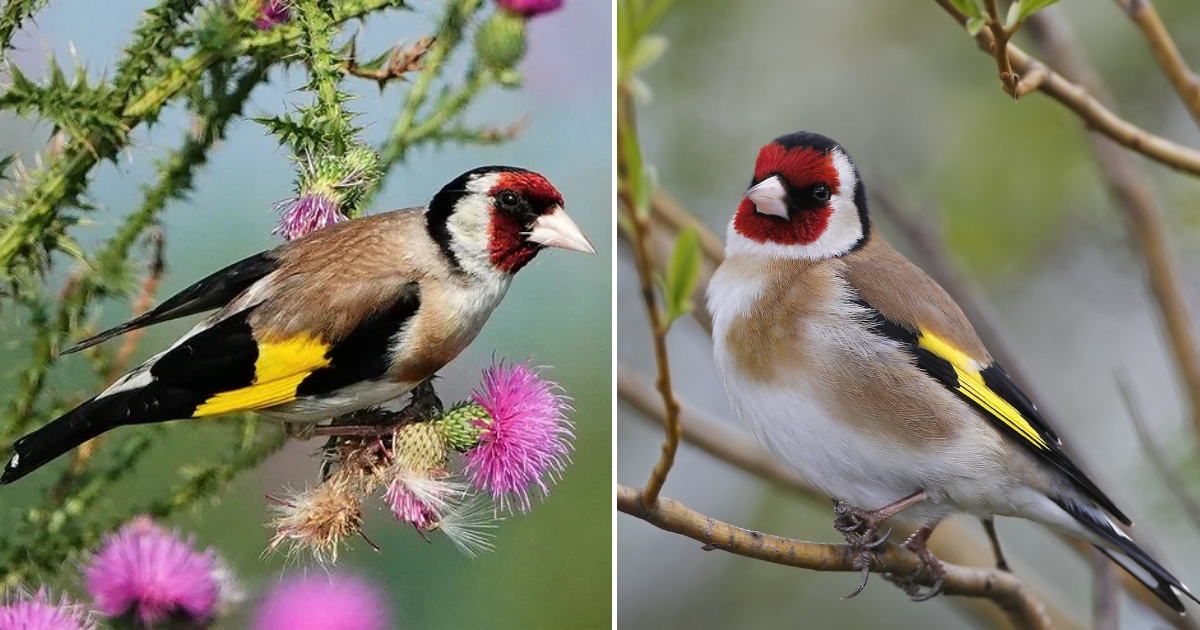
Among our numerous and generally ordinary birds, there are species that rival the beauty and brilliance of tropical feathered creatures. Normally, it is difficult to discern all the colors of a small bird in field conditions, but with binoculars or a camera telephoto lens, it becomes possible. A certain skill in observing these small birds is also important – some characteristics of their plumage are visible to the naked eye, especially if they have striking features.
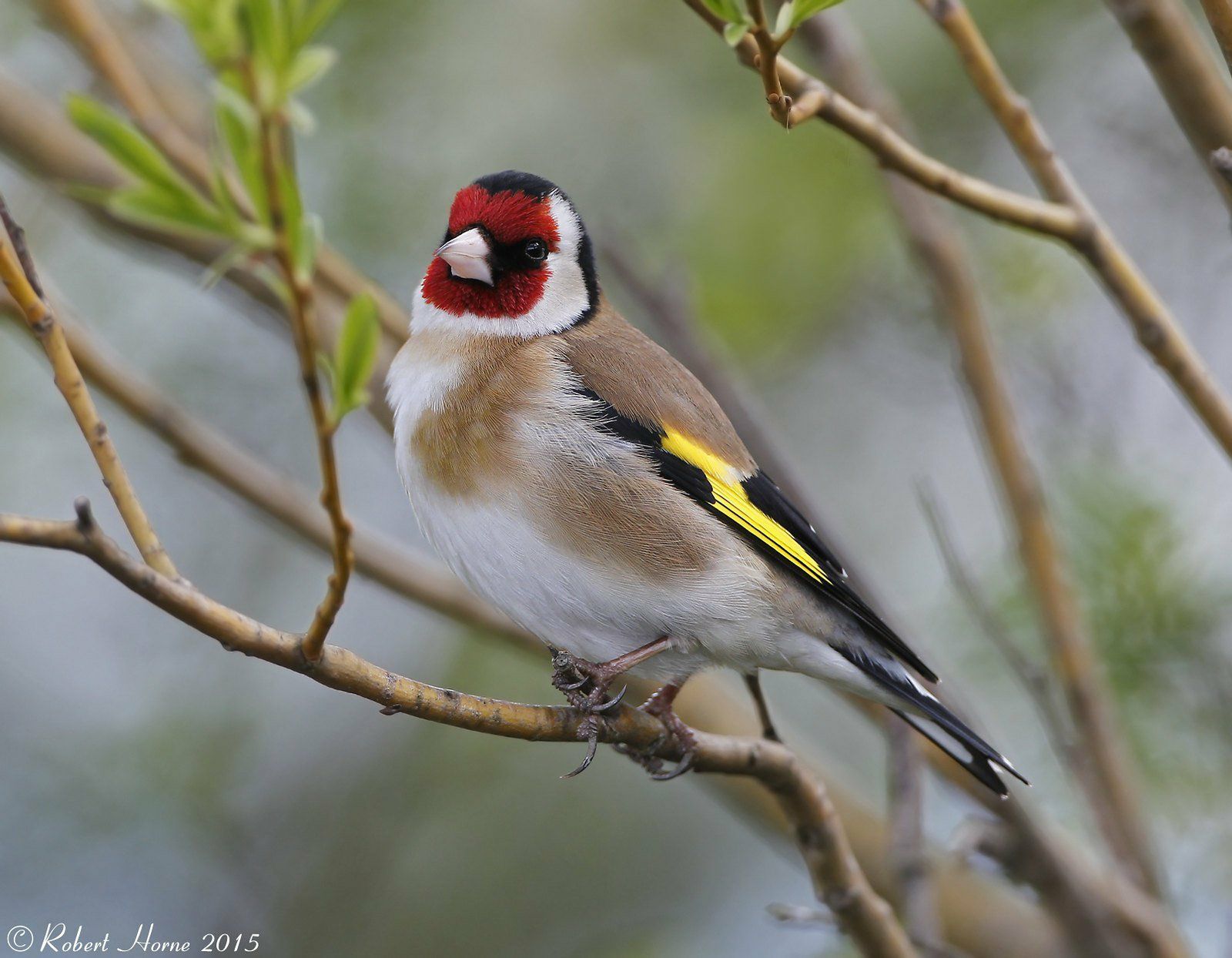
It is easy to distinguish in flight, despite its small size – a flock of flying goldfinches stands out with a bright yellow color on the middle part of their wings. The overall contrasting plumage of these birds, consisting of combinations of red, black, white, and yellow, is eye-catching.
The Common Goldfinch is slightly smaller than a sparrow and has a relatively sturdy yet sufficiently long beak. In general, this bird can only be confused with its closest relative, the Siskin, which inhabits Siberia. Unlike the latter, the Common Goldfinch has a black cap, which is reflected in its alternative name – the Black-headed Goldfinch.
The male and female are indistinguishable in the field. There are some unreliable differences: for example, the male has a red mask that extends beyond the eye, clearer boundaries of the black cap, and the bend of the wing is purely black without a brown tinge. However, reliably distinguishing the male from the female is usually possible only when the bird is in hand.
The Common Goldfinch is found in the territory ranging from Western Europe and Northern Africa to Transbaikalia. In Russia, it inhabits forested areas from the north to the northern taiga and the southern borders. It settles in forest clearings, sparse mixed and deciduous forests, river valleys, and cultural landscapes – in gardens, parks, and on the outskirts of settlements.
The goldfinch is easily recognizable by its voice, including in flight – they constantly emit a characteristic call. Their song is pleasant and chirping, consisting of a set of soft trills.
Goldfinches usually build their nests quite high in trees, starting from 4 meters above the ground (sometimes lower or even on bushes). The female constructs a sturdy structure with thick walls, lined with plant down, animal fur, spider cocoons and webs, and feathers. The clutch usually consists of 4-5 eggs. The birds incubate them for 12-14 days, sometimes starting incubation from the middle of the laying. The nestlings stay in the nest for another 12-15 days. After fledging, they stay nearby the nest for 1-1.5 weeks while their parents continue to feed them.
Juvenile Goldfinch. They acquire adult plumage only in autumn.
Goldfinches are not territorial – pairs often settle near each other. After young birds leave their parents, they join other wandering birds, both adults and juveniles. Goldfinches can have two or even three broods in a season, with different pairs starting reproduction at different times. Most of them begin egg-laying in late May, but some may start breeding as late as mid-summer.
The basis of goldfinches’ diet consists of seeds from plants such as thistles, burdock, teazel, nettle, and others – their powerful yet sharp beak is well adapted for extracting seeds. They also feed on insects and spiders.
Goldfinches can be seen in flocks almost year-round due to the extended breeding season and their weak attachment to specific nesting sites. They may also nest in new locations for a second time in a season.
After the breeding season, goldfinches actively migrate within their breeding range – only the northern populations mainly move southward. They appear in fields, fallow lands, along roads, on the outskirts of villages, where there is an ample supply of grass seed. To preserve and maintain populations of seed-eating birds, it is crucial to leave areas overgrown with grass, including in urban areas, as a source of their food. Goldfinches are often seen at bird feeders.
Mentions of this bird are frequently found in folklore and religious writings – it is always a positive and bright symbol. The Common Goldfinch is known to be one of the most popular birds kept in cages. Unfortunately, in some places, their numbers, as well as those of other birds, have declined due to bird catchers (as well as due to the cultivation and destruction of wild plants). In England, for example, goldfinches had to be protected in the 19th century when the trend of keeping birds in cages was particularly widespread.
